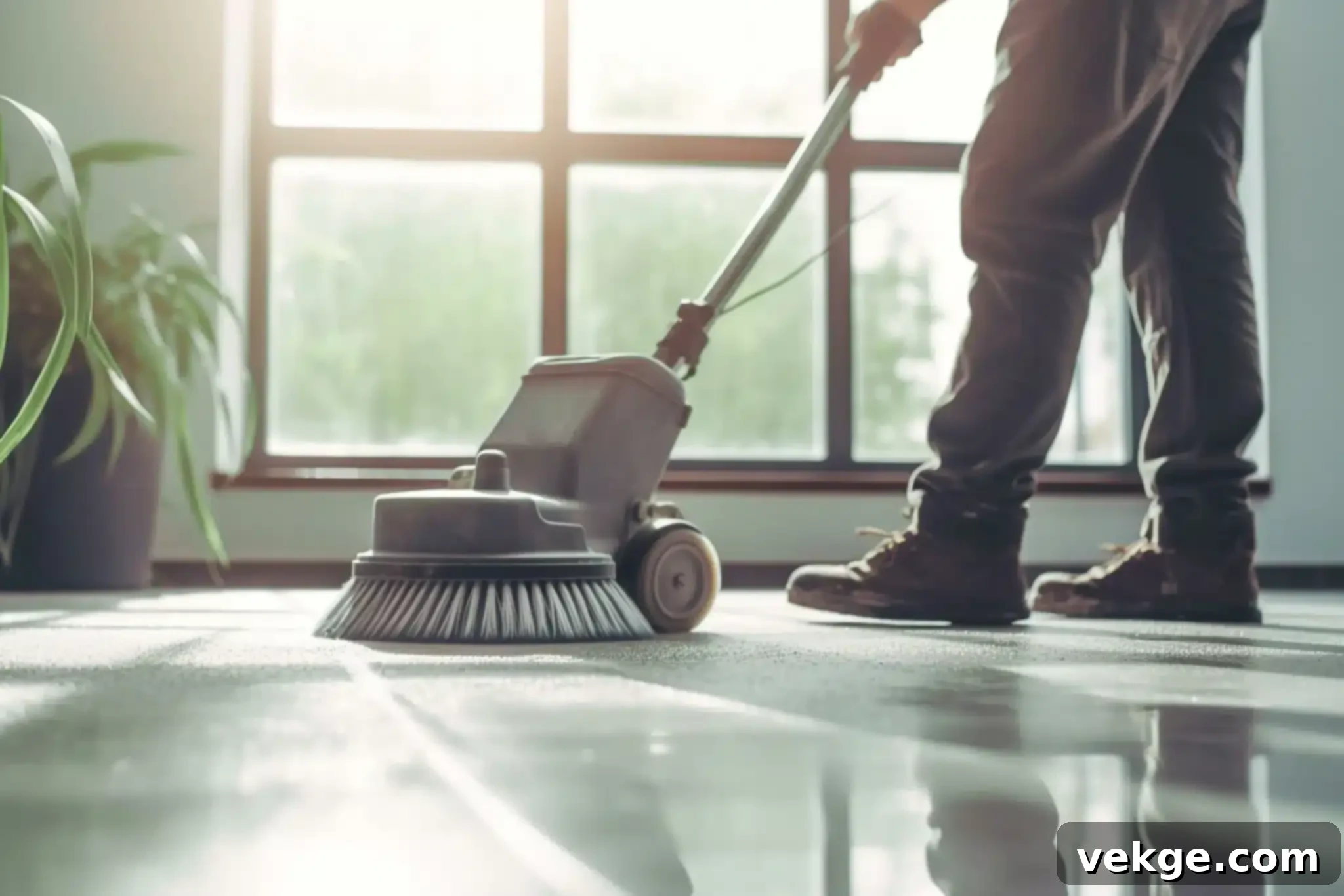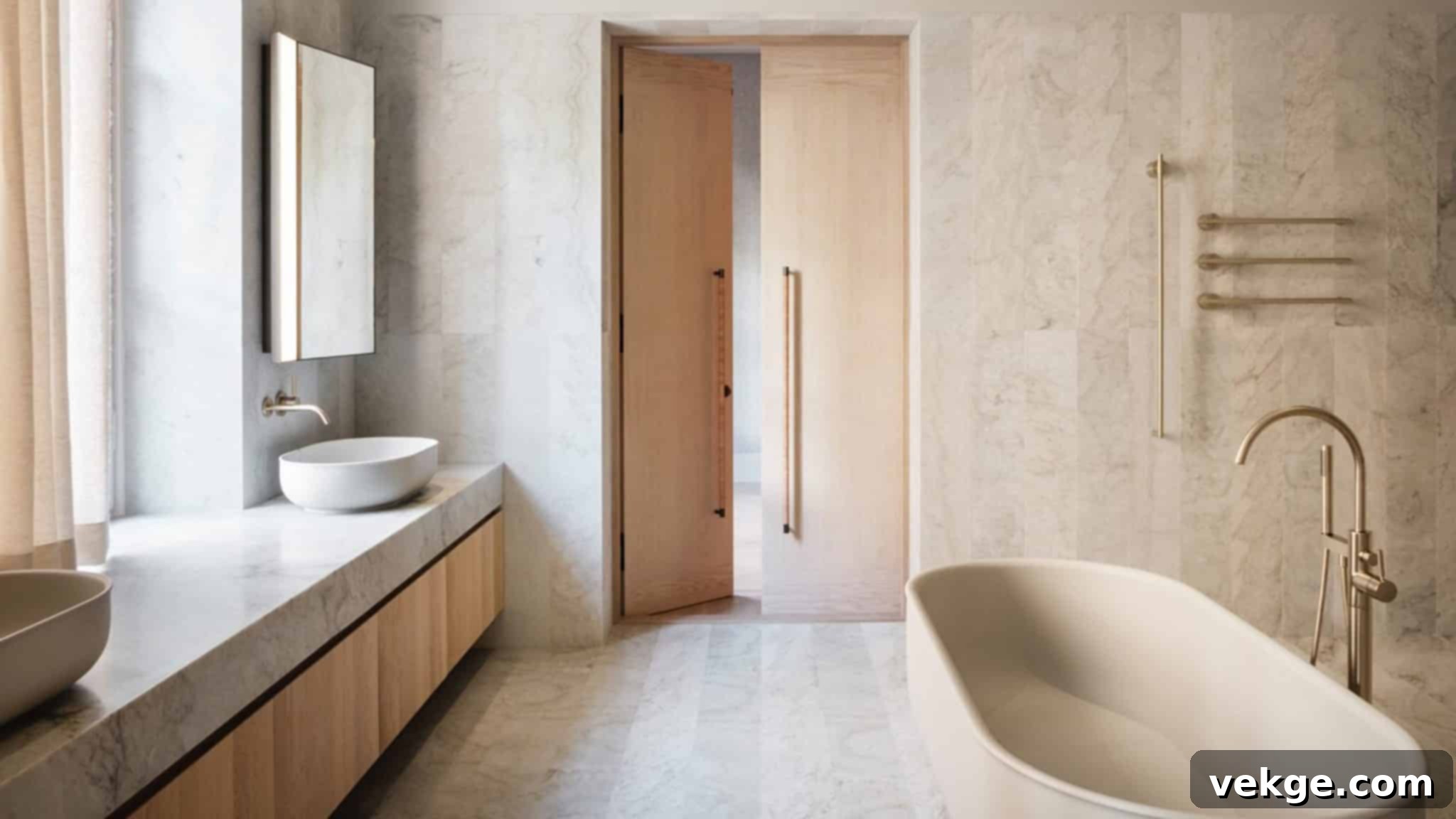Ultimate Guide to Home Maintenance: Keep Your Sanctuary Clean, Healthy, and Valuable
Our homes are far more than mere shelters; they are personal sanctuaries—havens where we relax, spend quality time with loved ones, and forge enduring memories. The continuous upkeep and thoughtful maintenance of these living spaces are fundamental, directly impacting our physical health, mental well-being, and overall quality of life. A well-cared-for home offers comfort, safety, and a sense of pride, contributing significantly to a harmonious daily existence.
This comprehensive guide delves into essential upkeep practices tailored for different areas of your home. By following these detailed recommendations, you can ensure optimal hygiene, enhance the longevity of your property’s components, and cultivate a consistently healthy indoor environment that supports your lifestyle for years to come.
Flooring: The Foundation of a Clean and Inviting Home

Your home’s flooring not only defines its aesthetic but also endures the most daily wear and tear. The specific type of flooring you have dictates the most effective and necessary cleaning methods to preserve its beauty, functionality, and structural integrity. Understanding these nuanced approaches is crucial for long-term maintenance. Here’s a detailed breakdown of proper care for common flooring materials:
Hardwood Floors: Preserving Timeless Elegance
The enduring appeal and warmth of hardwood floors make them a coveted feature in many homes. To maintain their timeless elegance and prevent premature wear, regular maintenance is essential. Begin with daily sweeping or dust mopping to effectively remove loose dirt, dust, and debris that can scratch the finish. For periodic deeper cleaning, always use a manufacturer-recommended, pH-neutral wood floor cleaner applied with a damp (not wet) microfiber mop. It’s critical to avoid excessive moisture, as water is the enemy of hardwood, capable of causing warping, buckling, and irreversible damage. To minimize scratches, dents, and overall wear in high-traffic zones, strategically place area rugs and use furniture pads under heavy items. Additionally, maintaining consistent indoor humidity levels can prevent the wood from expanding or contracting, which can lead to gaps or cracks.
Carpeting: Comfort, Warmth, and Air Quality
Carpeting offers unparalleled warmth, comfort, and sound absorption, transforming a house into a cozy home. However, it also acts as a natural filter, trapping dust, allergens, pet dander, and microscopic particles that can significantly impact indoor air quality. Regular vacuuming, ideally with a vacuum cleaner equipped with a HEPA filter, is paramount for removing these embedded contaminants and maintaining a healthy living environment. Aim to vacuum high-traffic areas several times a week and less frequently used rooms at least once a week. Beyond routine vacuuming, deep cleaning with a professional carpet cleaning service is highly recommended every 12-18 months. Professionals use specialized equipment and solutions to extract deep-seated dirt and allergens, revitalizing your carpet’s appearance and extending its lifespan. Crucially, address spills immediately by blotting (not rubbing) with a clean cloth and an appropriate cleaner to prevent permanent stains and mold growth.
Tile Floors: Durability Meets Easy Maintenance
Tile floors are celebrated for their exceptional durability, moisture resistance, and ease of cleaning, making them ideal for kitchens, bathrooms, and entryways. Regular sweeping or vacuuming is the first step to remove loose dirt and grit that can scratch the surface. Follow this with mopping using a mild, pH-neutral detergent solution to keep them sparkling. For stubborn stains or discolored grout lines, consider using a grout cleaner specifically formulated for tile, applying it with a stiff brush. Remember to rinse thoroughly to prevent residue buildup. To protect your tile from tracked-in dirt and abrasive debris, always use doormats at all entryways. For porous natural stone tiles (like marble or travertine), periodic sealing is necessary to protect against stains and moisture infiltration, ensuring their beauty lasts for decades.
Walls and Ceilings: Maintaining a Flawless and Fresh Aesthetic

Often overlooked in routine home maintenance, walls and ceilings play a significant role in your home’s overall cleanliness, light reflection, and aesthetic appeal. Regular upkeep of these surfaces not only preserves their pristine finish but also proactively prevents more substantial and costly problems down the line. Paying attention to these areas ensures a clean, bright, and inviting atmosphere throughout your home.
Dust Buildup: Keeping Surfaces Pristine
Walls and ceilings are magnets for dust, cobwebs, and airborne particles, especially in areas with less airflow or higher foot traffic. Over time, this buildup can dull paint colors and contribute to allergens in the air. To effectively remove dust and keep your surfaces looking fresh, incorporate regular dusting into your cleaning routine. Use a long-handled duster with a microfiber head, a clean microfiber cloth, or a vacuum cleaner equipped with a soft brush attachment. For higher ceilings, an extendable pole duster can reach those often-forgotten corners. Cleaning these surfaces quarterly can make a noticeable difference in your home’s overall cleanliness and air quality.
Minor Repairs: Addressing Imperfections Promptly
Even in the most well-maintained homes, small imperfections like hairline cracks, minor chips, or nail pops in walls and ceilings can appear. While seemingly insignificant, these blemishes can detract from the overall aesthetic and, if left unaddressed, may worsen over time, potentially indicating underlying structural shifts. Promptly repairing these minor imperfections is key to maintaining a flawless finish. Utilize a patching compound or spackle for filling small holes and cracks, ensuring the surface is smooth before applying primer. Always use paint that is perfectly matched to your existing wall or ceiling color to ensure an invisible repair. Tackling these small issues early prevents them from becoming more noticeable and potentially more complex to fix later.
Mold Growth: Prevention and Safe Remediation
Mold is a pervasive issue that thrives in damp, humid environments, making it a common concern in homes, particularly in bathrooms, kitchens, and basements. Its presence not only compromises the visual appeal of surfaces but also poses significant health risks, especially for individuals with allergies or respiratory conditions. The most effective strategy against mold is prevention: address any leaks—from plumbing, roofs, or windows—immediately and thoroughly dry affected areas. In moisture-prone zones like bathrooms, ensure proper ventilation by running exhaust fans during and for at least 30 minutes after showers or baths. Consider using dehumidifiers in basements or other humid spaces to keep indoor humidity levels below 60%. If you discover mold growth, first identify and eliminate the source of moisture. For small areas (less than 10 square feet), you can attempt removal using a solution of water and detergent, or a bleach solution (1 cup bleach per gallon of water) for non-porous surfaces, always wearing appropriate protective gear. For larger infestations or if you suspect hidden mold, it’s crucial to consult a professional mold remediation specialist to ensure safe and complete removal, preventing recurrence and protecting your health.
Kitchens and Bathrooms: Guardians of Health and Hygiene

Kitchens and bathrooms are arguably the most critical areas for rigorous cleaning and sanitization within your home. These high-moisture, high-traffic zones are fertile grounds for bacteria, viruses, and mold growth, making consistent hygiene paramount to prevent the spread of illness. Implementing a robust cleaning routine in these spaces is not just about aesthetics; it’s about safeguarding the health of your household. Here are some essential practices to maintain an impeccably clean and healthy environment:
Daily Cleaning: Essential for Ongoing Freshness
To keep your kitchen and bathroom consistently clean and hygienic, establish a routine of daily cleaning. After each use, wipe down countertops, stovetops, and sink areas in the kitchen to remove food residues and spills. In the bathroom, a quick wipe of the sink and toilet seat can prevent grime buildup. Regularly disinfect surfaces that are frequently touched, such as faucets, light switches, and doorknobs, using a disinfectant solution appropriate for the material. Promptly cleaning spills prevents not only unsightly stains but also curtails the rapid growth of bacteria and other microorganisms. Using fresh cleaning cloths daily or sanitizing reusable ones is also a vital step to prevent cross-contamination.
Deep Cleaning: The Foundation of Sanitation
Beyond daily tidying, schedule regular deep cleaning sessions for your kitchen and bathroom. This intensive cleaning targets areas often missed during daily routines. For the kitchen, deep cleaning includes thoroughly scrubbing floors, degreasing oven interiors and stovetop grates, cleaning inside and behind appliances like the refrigerator and microwave, and sanitizing cabinet interiors. In the bathroom, this means scrubbing floors and grout, meticulously disinfecting toilets, bathtubs, and showers, cleaning shower heads to remove mineral deposits, and addressing grout lines. These periodic deep cleans eliminate accumulated grime, limescale, and pathogens, ensuring a truly sanitized living space.
Ventilation: Your Best Defense Against Moisture and Mold
Proper ventilation is an indispensable component of maintaining hygiene in moisture-prone areas. Running exhaust fans during and after cooking or showering is crucial for expelling excess humidity, steam, and odors. This action significantly reduces the ideal conditions for mold and mildew growth, which can quickly take hold in damp environments. If you don’t have an exhaust fan, opening windows and doors to create cross-ventilation is a good alternative. Ensuring adequate airflow helps to dry surfaces quickly, preventing the stagnation of moisture that harbors undesirable microbial growth and can lead to structural damage over time.
Roof Maintenance: Keeping a Tight Ship Above

Your roof is the primary defense system protecting your home from the relentless onslaught of elements—rain, wind, snow, and sun. Neglecting its condition can lead to devastating consequences, including extensive water damage, structural issues, and costly emergency repairs. Regular, proactive roof maintenance is not just about preventing leaks; it ensures its longevity, preserves your home’s structural integrity, and ultimately saves you significant money in the long run. Here’s what you can do to keep your roof in top shape and protect your most valuable asset:
- Professional Visual Inspections: It is highly recommended to schedule annual inspections by a qualified and reputable roofing professional. These experts possess the knowledge and experience to safely access your roof and thoroughly identify potential issues that might be invisible to the untrained eye. They will meticulously check for loose, cracked, curling, or missing shingles, assess the condition of flashing around chimneys and vents, inspect gutters and downspouts for blockages, evaluate the integrity of the fascia and soffits, and look for signs of wear and tear, moss, or algae growth. Early detection of minor problems can prevent them from escalating into major, expensive repairs.
- Regular Debris Removal: Throughout the year, leaves, branches, pine needles, and other organic debris can accumulate on your roof, especially after storms. This buildup is detrimental as it traps moisture against the shingles, accelerating their degradation and creating conditions ripe for mold, mildew, and rot. Such debris can also clog gutters, causing water to back up and overflow, potentially damaging fascia boards, siding, and your home’s foundation. Regularly clearing this debris, particularly from valleys and around chimneys, is crucial. If it’s safe to do so, use a leaf blower or a soft-bristled brush. For gutters, ensure they are free-flowing to direct water away from your home effectively.
- Promptly Addressing Minor Issues: Never underestimate the potential impact of seemingly minor roof problems. A small, unaddressed leak can quickly escalate into a catastrophic issue, causing extensive water damage to insulation, ceilings, drywall, electrical systems, and even fostering dangerous mold growth within your home’s structure. Similarly, a single damaged or missing shingle can compromise the entire roof system, leaving your home vulnerable. Address any identified leaks, damaged shingles, or compromised flashing immediately. While some minor fixes can be DIY, for most roof repairs, particularly those involving leaks or structural integrity, it is always best to consult a professional roofer to ensure the repair is done correctly and safely, preserving your roof’s warranty and extending its life.
Beyond Cleanliness: The Profound Value of Preventative Home Maintenance
While maintaining a clean and aesthetically pleasing environment is a significant benefit of regular home upkeep, the true value of preventative maintenance extends far beyond superficial appearances. Adopting a proactive approach to home care can lead to substantial long-term savings, enhanced safety, and a more comfortable living experience. It’s an investment in your property’s future and your peace of mind.
Cost Savings and Avoiding Major Repairs
One of the most compelling advantages of preventative maintenance is its ability to save you money by preventing minor issues from escalating into expensive, emergency repairs. For instance, promptly addressing a small roof leak, as mentioned earlier, can prevent extensive water damage to your attic, insulation, drywall, and even electrical systems, potentially avoiding tens of thousands of dollars in repairs or a complete roof replacement. Similarly, regularly cleaning your gutters prevents water damage to your foundation, siding, and landscaping. Replacing HVAC filters monthly and scheduling annual professional HVAC tune-ups can significantly extend the life of your unit, improve its efficiency, and prevent costly breakdowns during extreme weather, saving you money on utility bills and premature system replacement. Catching a small plumbing leak under a sink early can prevent extensive water damage to cabinetry and flooring, averting potential mold growth and structural issues.
Extending the Lifespan of Your Home’s Systems and Appliances
Proper and consistent maintenance directly contributes to extending the operational lifespan of your home’s various systems and appliances, maximizing your initial investment. Routine servicing of your HVAC system ensures it operates at optimal efficiency, reducing energy consumption and lowering your utility bills while postponing the need for a costly replacement. Similarly, regularly cleaning and descaling your water heater can prevent sediment buildup, which improves efficiency and extends its life. Taking diligent care of your flooring, walls, roof, and exterior elements translates to fewer repairs and replacements needed over time, preserving the structural integrity and aesthetic appeal of your property for decades.
Enhancing Property Value and Resale Appeal
A well-maintained home isn’t just more enjoyable to live in; it’s also a more valuable asset. Preventative maintenance directly contributes to higher property value and significantly boosts curb appeal. When it comes time to sell, a home with a meticulously cared-for roof, fresh paint, functional systems, and pristine interiors will stand out in the market, commanding a better price and attracting more prospective buyers. Buyers are often willing to pay a premium for a move-in-ready home that doesn’t require immediate repairs or upgrades, viewing a history of diligent maintenance as a sign of responsible ownership. Regular upkeep also ensures that your home passes inspections with fewer issues, streamlining the selling process.
Improving Indoor Air Quality and Health
Beyond the structural and financial benefits, preventative maintenance profoundly impacts the health and well-being of your household. Regular cleaning and attention to ventilation, particularly in moisture-prone areas, drastically reduce the risk of mold growth, which can trigger allergies, asthma, and other respiratory problems. Maintaining clean air filters in your HVAC system, vacuuming carpets regularly, and dusting surfaces effectively remove allergens, dust mites, and pollutants from your indoor environment, contributing to superior indoor air quality. This creates a healthier living space, especially beneficial for children, the elderly, and individuals with chronic health conditions.
Increased Safety and Peace of Mind
Finally, a well-maintained home is a safer home. Regular checks on electrical systems, plumbing, and structural components can identify potential hazards before they cause accidents. Ensuring smoke detectors and carbon monoxide detectors are tested and functioning correctly is a critical, life-saving aspect of home maintenance. Knowing that your home is safe, sound, and in excellent condition provides unparalleled peace of mind, allowing you to fully relax and enjoy your sanctuary without constant worry about potential issues.
Building a Healthy, Lasting, and Valuable Home for the Future
Embracing and diligently following these essential upkeep practices is the cornerstone of creating not just a house, but a healthy, thriving, and enduring environment for yourself and your loved ones. Home maintenance is an ongoing commitment, but the rewards are immeasurable, touching every aspect of your daily life.
A consistently well-maintained home transcends the superficial benefits of a comfortable and aesthetically pleasing space. It significantly contributes to improved indoor air quality, dramatically reduces the risk of hazardous mold growth and troublesome pest infestations, and robustly protects the foundational structural integrity of your most valuable property. By proactively addressing potential issues and investing time and effort into routine care, you safeguard your health, enhance your comfort, and future-proof your investment.
Invest wisely in the continuous upkeep of your home. It will undoubtedly reward you with a sanctuary that not only fosters well-being and provides a safe haven but also offers lasting value, comfort, and peace of mind for countless years to come. Start today, and build a legacy of responsible homeownership.
